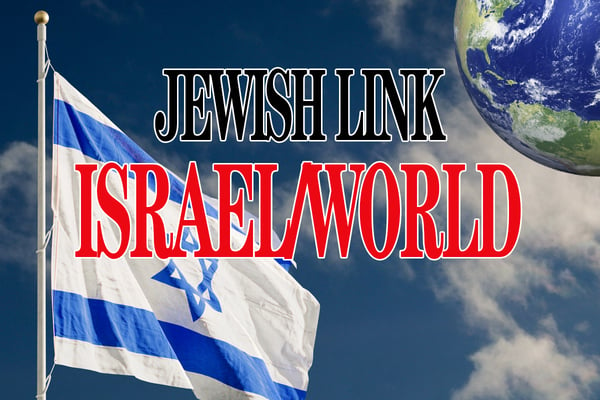Even the Washington sniper would likely be acquitted in a court of law bound by the Jewish laws of criminal evidence. There were no witnesses to the killings and nobody warned the sniper seconds before each shooting that the punishment for murder is death. That is not to say that the sniper is innocent. He is guilty. It just means that the Beit Din, the Jewish Court of Law, has no authority to administer the death penalty in such a case. It would have to be administered in due course and time by the President of the Heavenly Court.
From the violator’s perspective, the prospect of death at the Hand of God may seem as dim as a cloudy star. From God’s perspective, however, that prospect is as clear as the stars surrounding Him. Furthermore, execution at the hands of the Beit Din gives the violator the opportunity to confess and atone for his sins, thereby reserving for him a place in the world to come. But for the violator awaiting unannounced death at the Hand of God, there may be no time to confess.
The Jewish laws of criminal evidence are tilted so heavily in favor of the accused that a Beit Din that administers the death penalty once every seven years is called חבלנין -Chablanin, a hanging court.
The burden of proof required in דיני נפשות – dinei nefashot, capital cases, is heavier than the burden of proof required in דיני ממנות – dinei mamonot, monetary cases. In dinei mamonot, if the standard of examination is too rigorous and a minor inconsistency between the testimonies of two witnesses excuses the borrower from repaying the debt, lenders will cease lending. In dinei nefashot, if the standard of examination is too relaxed and inconsistencies in testimony are tolerated, an innocent person may be put to death. What follows are some illustrations of the heavier burden of proof.
The types of questions posed to witnesses in court fall into three categories: דרישות -drishot, inquiries into the underlying facts of the case; חקירות – chakirot, questions that establish when and where these facts took place; and שאלות – she’eilot (also referred to as בדיקות – bedikot), questions that have no critical connection to the case but test the witnesses’ powers of observation.
If witnesses in a dinei mamonot case contradict one another in their answers to sheilot, their testimony will be admissible as long as they do not contradict one another in their answers to drishot and chakirot. In dinei nefashot, such testimony would be thrown out. If one witness saw the plaintiff lend the defendant $50,000 on Monday and another witness saw the plaintiff lend the defendant $50,000 on Wednesday, the Beit Din would enter judgment for the plaintiff’s claims of $100,000. If one witness looking out of one window into the street saw the accused murder the victim, and the second witness saw the same thing from another window, but the witnesses did not see each other, the testimony will be thrown out.
Circumstantial evidence, referred to in the Halacha as אומדנא – umdana, is inadmissible both in dinei nefashot and dinei mamonot. There is no smoking gun in Jewish law. Even if the witnesses saw the accused chasing the victim with a knife and ran after them into a yard where the witness saw the accused holding a knife dripping with blood and the wounded victim gurgling on the ground, this evidence is inadmissible. The accused cannot be convicted unless the witnesses testify that they warned or heard others warn the accused not to kill and that if he kills he will be beheaded. They must testify that they heard the accused respond that he will kill even though he will face execution and that he then תוך כדי דבור – toch kedei dibur, promptly, committed the murder.
Before examining the witnesses, the court explains to them in detail the Jewish laws of criminal evidence and their heavy burden of proof. It cautions them that they must be meticulous in their testimony because a person’s life, with all that entails, literally hangs in the balance.The witnesses are then examined separately and if their testimony establishes a case against the accused, the court turns to the accused and asks whether he has any עידי הכחשה – witnesses to contradict the incriminating testimony or עידי הזמה – eidei hazamah, to discredit the witnesses. The court also sends out a public notice requesting any person with evidence in favor of the accused to come forward. The accused is also invited to present arguments in his own favor.
It should be noted, that in times of הוראת שעה – hora’at sha’a, certain national emergency situations, the Sanhedrin had the authority to sentence an accused to death even if the incriminating testimony did not meet the required standards.
Raphael Grunfeld, a partner at the Wall Street law firm of Carter Ledyard & Milburn LLP, received Semichah in Yoreh Yoreh from Mesivtha Tifereth Jerusalem of America and in Yadin Yadin from Harav Haga’on Dovid Feinstein, zt”l. This article is an extract from Raphael’s book “Ner Eyal: A Guide to Seder Nashim, Nezikin, Kodashim, Taharot and Zerai’m” available for purchase at www.amazon.com/dp/057816731X or by emailing Raphael at rafegrunfeld@gmail.com.












